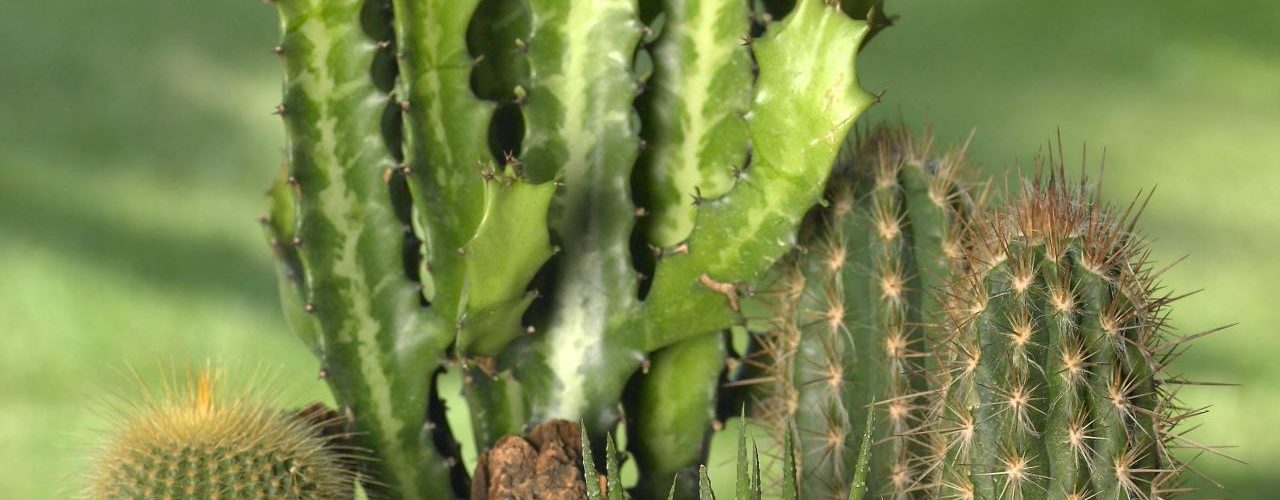Whether planted in a pot or incorporated directly into your landscape, a cactus is a beautiful and unique feature in any environment.
Planting Cactus in Pots
When you bring a cactus home from the nursery, there is little way of knowing how long it has been in its present pot. Likely as not, a larger pot will be necessary. Your cactus’s new “home” should be from 1-1.5 times larger than its current pot.
Potting soil will not do for your new cactus; it needs a medium that provides very good drainage. One suggested mixture for potting cacti is:
• 1 part potting mix (not potting soil)
• 1 part washed sand
• 1 part coarse gravel or pumice
When repotting, it is best to gently break the old pot and remove the pieces. This causes less root damage than digging the cactus out of the old pot. Place a small amount of planting medium in the bottom of the new pot. Place your cactus in the pot, then fill in the remainder with more medium. Water just enough to moisten the medium thoroughly.
If keeping your cactus inside, place it near a window that admits adequate sunlight. If you cactus will reside on a patio, set it in the shade, allowing it to become gradually accustomed to the sunlight. Never place a newly potted cactus in direct sunlight, as it can sustain burns.
Potted cacti should receive regular and consistent feedings. A convenient method is to use a time-release cactus food, which will feed the cactus for up to six months. Other formulas of cactus food (e.g. a 5-10-10 fertilizer) require feedings about every three months.
Watering requirements will vary depending on where the cactus lives. If kept indoors, a cactus may only require monthly watering. If kept on a patio (and depending upon the season), weekly watering may be needed. A good rule of thumb is to keep the medium around the cactus moist at all times . . . never let it dry out.
Planting Cactus in Your Landscape
When planting a cactus outside in your landscape, plant selection and site selection are equally important.
When selecting a cactus to incorporate into your landscape, choose one whose natural habitat is most like the climate where you live. Consult your local nursery or agricultural extension agent to help you make the best choice.
It is best to choose a site for your cactus that provides either early morning or late afternoon sun. To avoid sun damage, plant the cactus where it will be shaded from direct midday sun. You can provide shade for your cactus by incorporating a large rock or two into the landscape environment.
Just as with potted cacti, you should provide adequate drainage in the landscape. You can do this by either building a raised bed or removing the top soil down to a depth of 6-12 inches. Fill with a mixture of equal parts potting mix, coarse sand, and perlite or gravel. When planting, set the roots of the cactus into the medium as shallow as possible. This will allow the roots to receive ample moisture without resting in overly wet soil.
Determining when to water outdoor cacti can be tricky. A good practice is to water when the top 1-1.5 inches of the soil become dry. During the wintertime, you will probably only need to water once a month.
Related Youtube Video
Additional Resources
The Texas A&M Horticultural Department has provided an excellent article on planting and growing cactus at
Texas A&M Horticultural Department: Growing Cactus
<>







